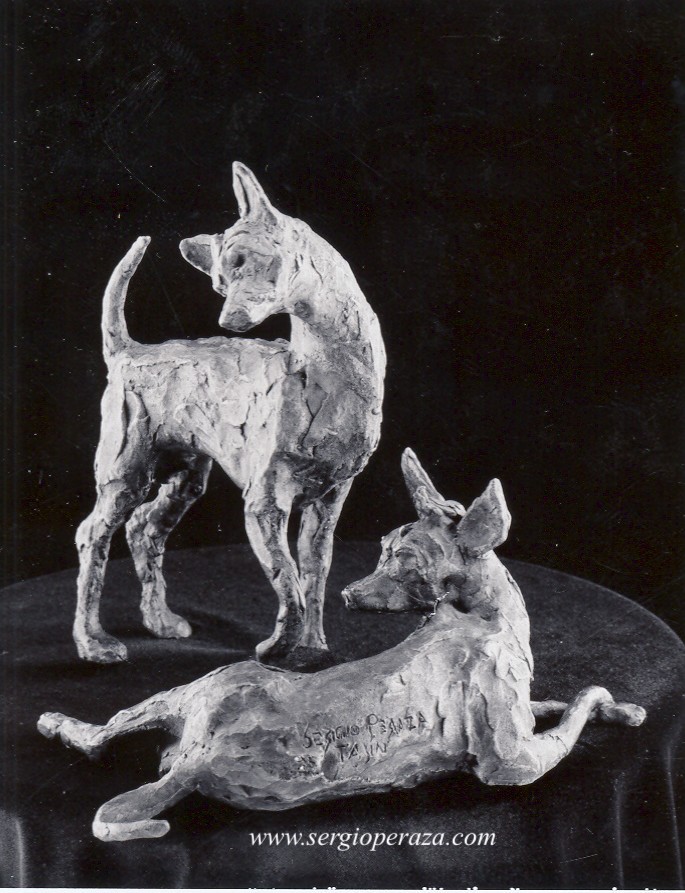
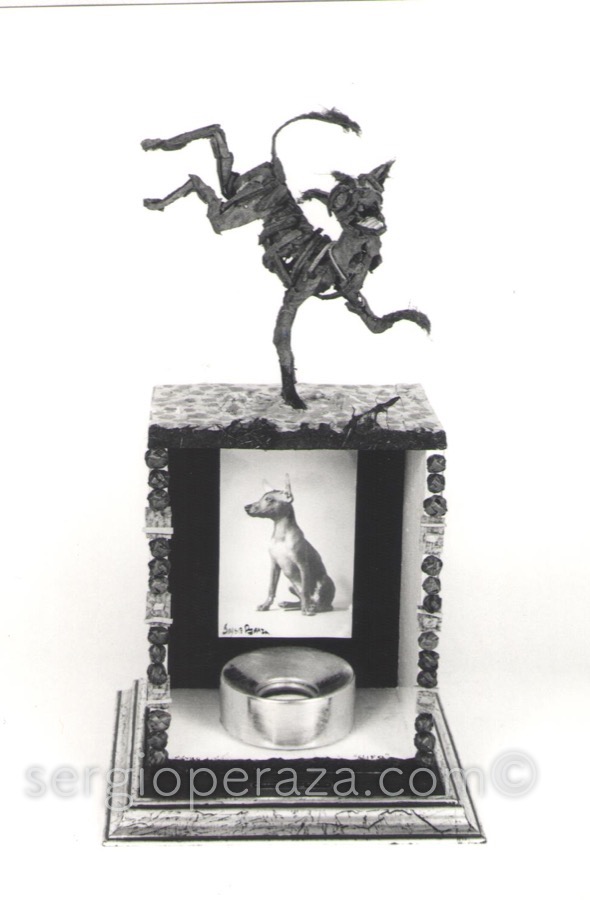
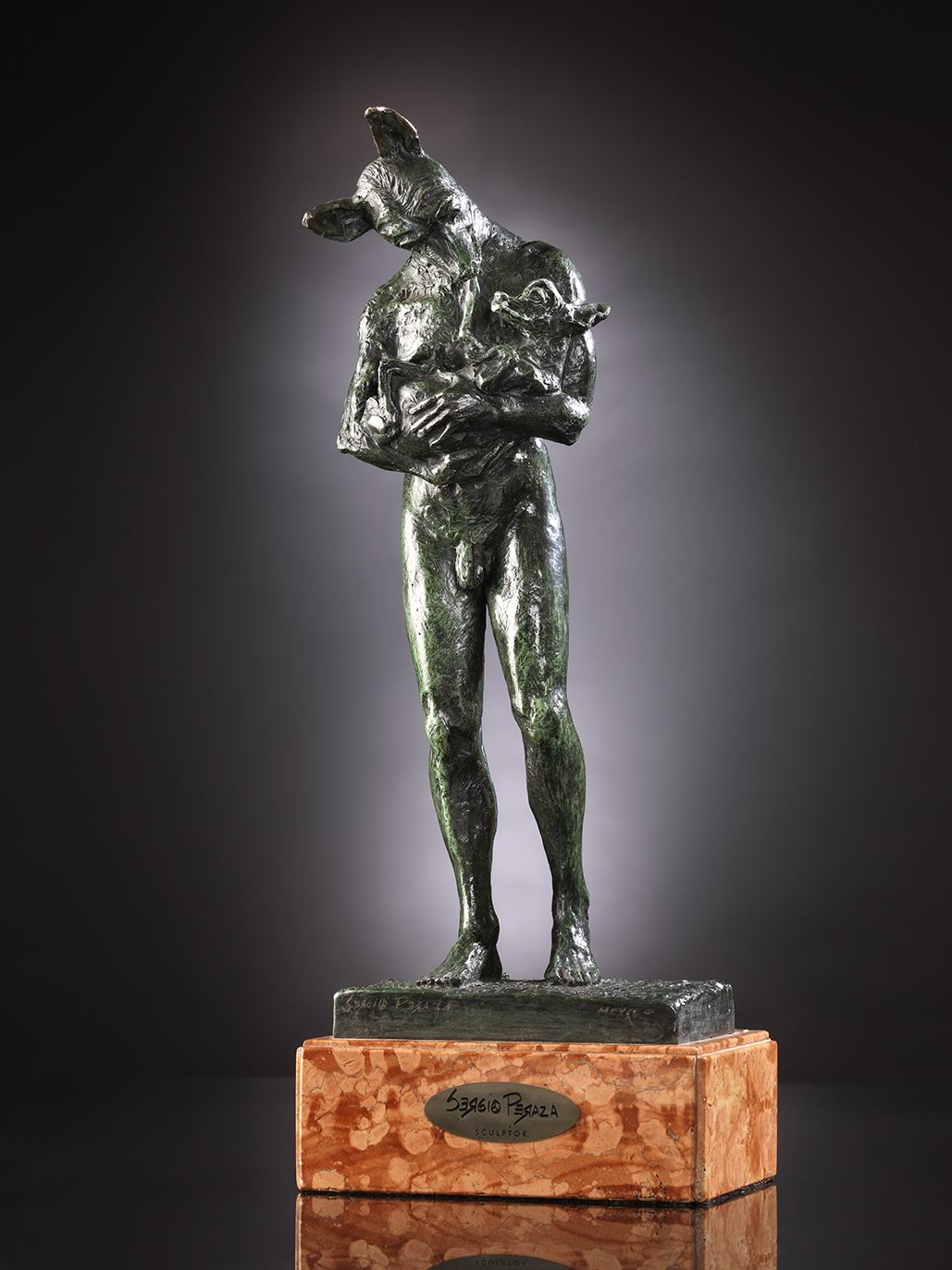
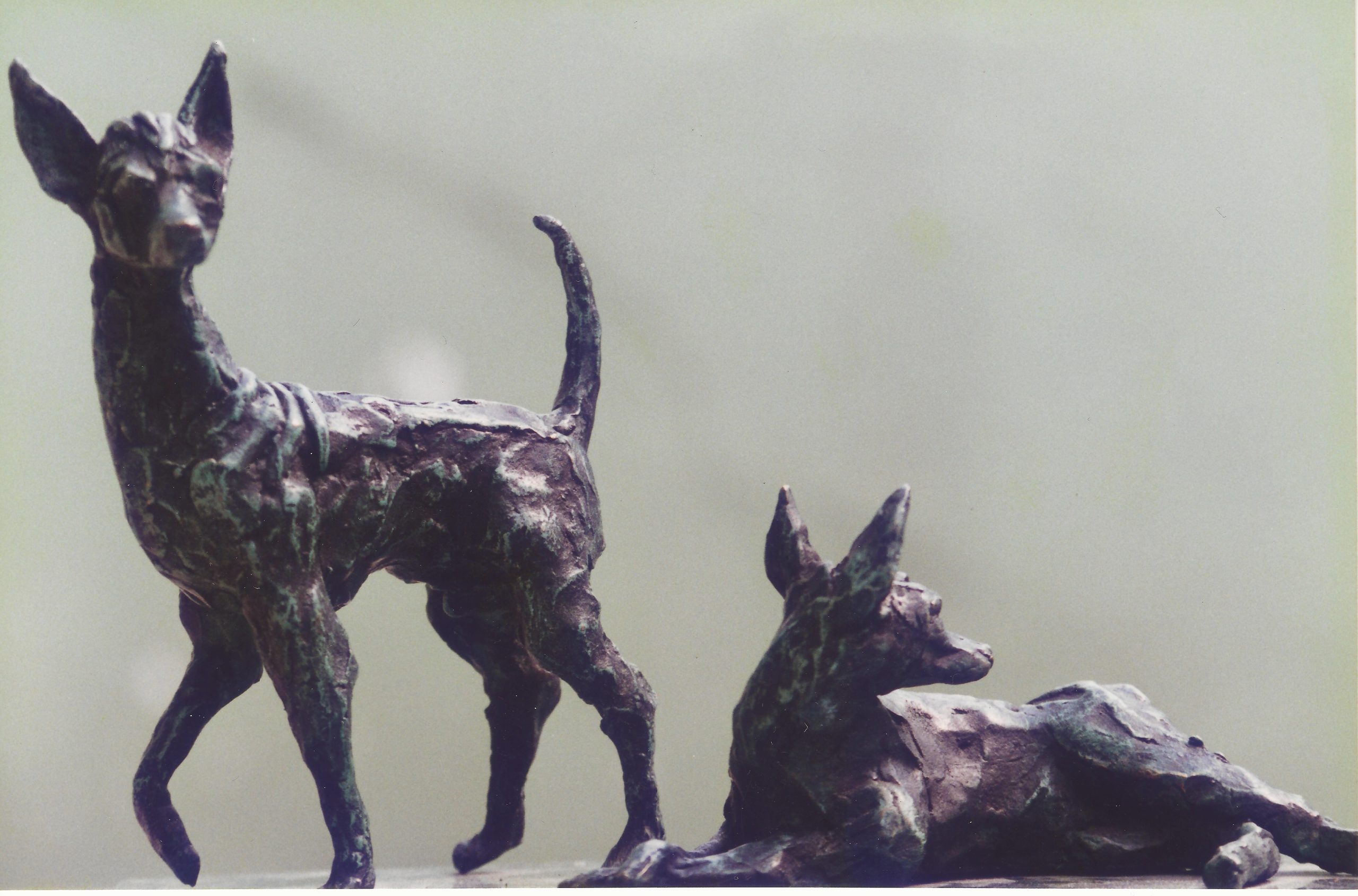
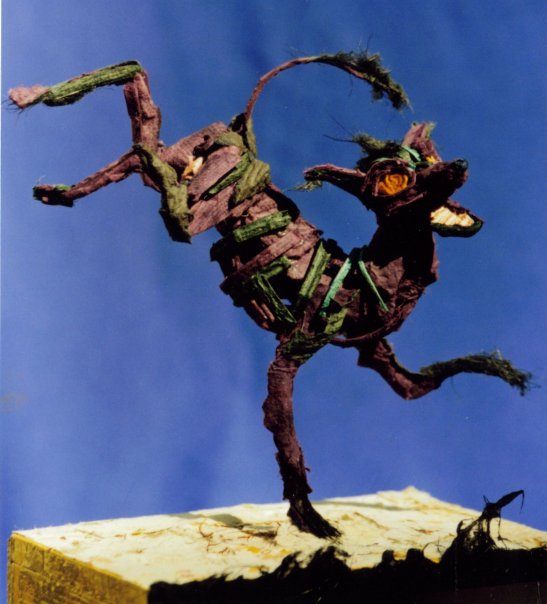
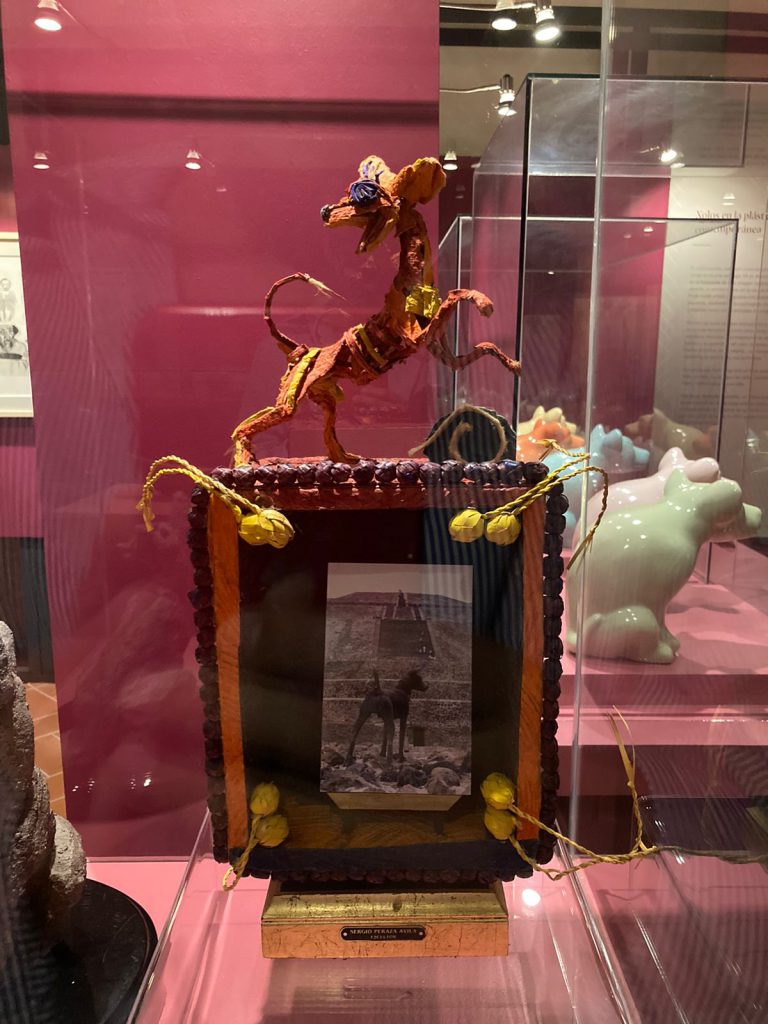
EL CÓSMICO DESAFIO A LA VIDA
“La belleza, en efecto, es la cualidad que atribuimos a las cosas visibles, cuando las sentimos capaces de exaltar el sentimiento de la vida” Bernard Berenson
La cualidad de exaltar el sentimiento de la vida en el seno de las Artes Plásticas, resulta o nace de una armonía perfecta de la forma la cual viene a ser el conjunto de los valores táctiles y del movimiento. Esta definición, como fácilmente puede percibirse es incompleta; pero, recurriendo a otros pasajes de Berenson, podremos llegar a perfilarla con el rigor debido en todos sus matices.
El placer artístico -dice en otro sitio- es de una manera exclusiva aquel placer consciente que procuran o producen, no ya las cosas por sí mismas y las imágenes de estas cosas si no las obras de arte que contienen belleza, y este, cualesquiera que fueren los elementos que entren en la composición, por estar constituida por una combinación afortunada de la forma, del movimiento y del espacio.
Rodin reveló por primera vez los dos grandes secretos de la escultura figurativa: el modelado y el movimiento; nos enseñó que no hay rasgos si no volúmenes, que el cuerpo se compone de protuberancias en donde afloran por doquier, bajo la piel, músculos y huesos, no superficies planas. En función de esto las formas no se deben modelas en extensión ni en contorno hay que captarlas en profundidad; así concebida la escultura se abre de adentro hacia afuera.
Nos revela también el segundo secreto de la escultura: el movimiento de un personaje se obtiene por el tránsito gradual de las diferentes partes de la escultura, y el escultor tiene que captarlas en momentos sucesivos. El movimiento, según el escultor, modifica y desfigura las formas; como la rueda que al girar ya no es redonda ni tiene ejes; el movimiento devora la anatomía al alargarla o encogerla, y trastorna el equilibrio.
Adriana García, periodista cultural, escribió con referencia a la exposición “Singularidades” sobre el escultor Sergio Peraza lo siguiente:
“Está siempre en búsqueda constante, su naturaleza no le permite encasillarse a la rigidez de ciertas técnicas, que luego de aprendidas logra transformarlas”. La inquietud del escultor, reside en su juventud, pero si ponemos la atención en dos facetas emprendidas durante los últimos años por el artista, nos daremos cabal cuenta que está ingresando en la decantación de su estilo y quisiéramos verlo en el próximo periódo de su producción, ya apartado del canto insinuante de las sirenas para poder llegar a puerto seguro.
La primera de las que yo llamo facetas, vienen a hacer los retratos o bustos de una galería que piensa realizar sobre los más ilustres intelectuales y artistas nuestros, en los que el autor se revela como uno de los más ilustres y aptos retratistas de México.
Por lo que respecta a la segunda faceta — al tiempo que trabajó como ayudante en la realización del mural del Tecnológico de Monterrey Campus Ciudad de México del maestro Raúl Anguiano, descubrió al fino xolo perteneciente al matrimonio Anguiano y comenzó a desarrollar una serie de actitudes posicionales de aquél que fue motivo escultórico más importante de las tumbas de Colima en la época prehispánica. Ningún escultor contemporáneo que yo sepa, ha desarrollado tan festivo y apasionante tema y celebro que el joven Sergio lo haya descubierto, pues es el único tema escultórico desincorporado de todo simbolismo religioso que está presente en la estatuaria que logró producir el arte indígena anterior a la conquista. Para mejor observarlo los criadores Rivera/Cortés, le obsequiaron el precioso perrito que se llama “Glifo” que a partir de entonces siempre lo acompaña.
Este perro llamado por nuestros antepasados itzcuintli y por los científicos el canis mexicanus, era un ser de altos méritos; un perro perfecto que no ladraba era comestible y, por encima de todo, tenía un atrayente sentido del humor y aunque gracias a una de esas misteriosas hazañas de la biología moderna el canis mexicanus parece haber resucitado de su extinción; esté regresó revivido de acuerdo a la inmortalidad que al itzcuintli le dio el arte prehispánico. Podríamos sugerir que el bellísimo ejemplar del perro del matrimonio Anguiano y el de Peraza es el xoloitzcuintli, tanto por su esbeltez como por su diferente proporción e relación al tlachichi.
Con particular intuición, Paul Westheim nos dice los que los habitantes de Colima “van desarrollando una artesanía de expresividad tan vigorosa en el sentido de una sensibilidad estilística propia y muy marcada; están empeñados en mostrar al hombre o al animal en toda su movilidad; torsiones, vueltas, intersecciones del cuerpo es lo que tratan de captar. Procuran crear “dinámica”. Dentro de sus creaciones no encontraremos jamás el menos atisbo a la forma concebida como bloque hermético y cerrado dentro de sus propios límites, como sucede en la estatuaria de otras culturas prehispánicas. Su primordial obsesión se manifiesta en el deseo por fijar lo que se lleva el instante, lo que arrastra el momento, creando así auténticos bocetos de movimiento, alejándose en dirección contraria a sus fundamentos arcaicos dando la espalda a los sentimientos religiosos, para poder fijar su verdadero objetivo: lo que les ofrece el día lo que alcanzan a percibir a través de los sentidos. Para el escultor colimense la vida es interesante, atractiva, no enigmática ni demoniaca.
Los perros se mueven, palpitan y Sergio capta su movimiento y su jadeo, capta su atención y su ensimismamiento; capta su lasitud y su sueño. Se trata pues de un arte de observación, sí, pero también de simpatía casi de enamoramiento. No se trata de pura descripción científica de la exacta reproducción de los rasgos distintivos de esta tan singular especie; aquí el artista reproduce al perro como individuo, como personalidad, solo esa familiaridad y esa simpatía pueden explicar que la vitalidad, su simple felicidad, su sinceridad y ternura han conquistado un lugar de privilegio porque son únicos en nuestro arte, la primera contribución a la corriente de felicidad que es una mitad de nuestra estética, esa corriente poblada por ángeles barrocos y bailarines por juguetes populares y cromáticos, subyacente en las frutas que punto Olga Costa, por el minucioso y salvaje edén que revivió Diego Rivera.
Toda una mitad del arte que equilibra la tragedia y tensión de la otra mitad. Una mitad que nos habla de un México cuya experiencia es ya no la de la dolorosa Coatlicue sino la del perro, saltando en el aire lanzando el cósmico desafío a la vida.
Felicidades a Sergio Peraza, por haber encontrado ese valiosísimo antecedente histórico dentro de la estatuaria prehispánica.
Luis Ortiz Macedo, Doctor en arquitectura
THE COSMIC CHALLENGE TO LIFE
“Beauty, in fact, is the quality that we attribute to visible things, when we feel they are capable of exalting the feeling of life” Bernard Berenson
The quality of exalting the feeling of life within the Plastic Arts, results or is born from a perfect harmony of the form which comes to be the set of tactile values and movement. This definition, as can easily be seen, is incomplete; but, resorting to other passages of Berenson, we will be able to outline it with due rigor in all its nuances.
Artistic pleasure – he says elsewhere – is exclusively that conscious pleasure that is procured or produced, not by things themselves and the images of these things, but by works of art that contain beauty, and this, whatever whatever elements enter into the composition, as it is constituted by a fortunate combination of form, movement and space.
Rodin revealed for the first time the two great secrets of figurative sculpture: modeling and movement; he taught us that there are no features but volumes, that the body is made up of protuberances where muscles and bones appear everywhere, under the skin, not flat surfaces. Based on this, shapes should not be modeled in extension or contour, they should be grasped in depth; Conceived in this way, the sculpture opens from the inside out.
He also reveals to us the second secret of sculpture: the movement of a character is obtained by the gradual transit of the different parts of the sculpture, and the sculptor has to capture them in successive moments. Movement, according to the sculptor, modifies and disfigures forms; like the wheel that when turning is no longer round or has axes; the movement devours the anatomy by lengthening or shrinking it, and upsets the balance.
Adriana García, cultural journalist, wrote with reference to the exhibition “Singularities” about the sculptor Sergio Peraza the following:
“He is always in constant search, his nature does not allow him to be confined to the rigidity of certain techniques, which after learning he manages to transform them.” The concern of the sculptor resides in his youth, but if we pay attention to two facets undertaken in recent years by the artist, we will fully realize that he is entering the decantation of his style and we would like to see him in the next period of his production. , already away from the insinuating song of the sirens to be able to reach a safe port.
The first of what I call facets, they come to make portraits or busts for a gallery that they plan to make of our most illustrious intellectuals and artists, in which the author reveals himself to be one of the most illustrious and capable portraitists in Mexico.
Regarding the second facet while he worked as an assistant in the realization of the mural of the Tecnológico de Monterrey Campus Mexico City of the teacher Raúl Anguiano, he discovered the fine xolo belonging to the Anguiano couple and began to develop a series of positional attitudes of what was the most important sculptural motif of the tombs of Colima in pre-Hispanic times. No contemporary sculptor that I know of has developed such a festive and passionate theme, and I am glad that young Sergio discovered it, since it is the only sculptural theme that is disincorporated from all religious symbolism that is present in the statuary that indigenous art managed to produce prior to the conquest. To better observe him, the Rivera/Cortés breeders gave him a precious puppy called “Glifo” that from then on always accompanies him.
This dog called by our ancestors itzcuintli and by scientists the canis mexicanus, was a being of high merits; a perfect dog that didn’t bark was edible and, above all, had an engaging sense of humor and though thanks to one of those mysterious feats of modern biology the canis mexicanus appears to have been resurrected from extinction; It came back revived according to the immortality that pre-Hispanic art gave the itzcuintli. We could suggest that the most beautiful specimen of the dog of the Anguiano couple and that of Peraza is the xoloitzcuintli, both for its slenderness and for its different proportion and relation to the tlachichi.
With particular intuition, Paul Westheim tells us that the inhabitants of Colima “are developing a craft of such vigorous expressiveness in the sense of their own and very marked stylistic sensibility; they are determined to show man or animal in all their mobility; twists, turns, intersections of the body is what they try to capture. They try to create “dynamics”. Within his creations we will never find the least glimpse of the form conceived as a hermetic and closed block within its own limits, as happens in the statuary of other pre-Hispanic cultures. His primordial obsession manifests itself in the desire to fix what the moment takes, what drags the moment, thus creating authentic sketches of movement, moving away in the opposite direction from its archaic foundations, turning his back on religious sentiments, in order to fix his true objective: what the day offers them what they manage to perceive through the senses. For the sculptor from Colima, life is interesting, attractive, not enigmatic or demonic.
The dogs move, throb and Sergio captures his movement and his panting, captures his attention and his absorption; he senses her lassitude and dreams of him. It is therefore an art of observation, yes, but also of sympathy, almost of falling in love. It is not a pure scientific description of the exact reproduction of the distinctive features of this unique species; here the artist reproduces the dog as an individual, as a personality, only that familiarity and sympathy can explain that vitality, its simple happiness, its sincerity and tenderness have conquered a privileged place because they are unique in our art, the first contribution to the current of happiness that is one half of our aesthetics, that current populated by baroque angels and dancers by popular and chromatic toys, underlying the fruits that Olga Costa knitted, by the detailed and wild Eden that Diego Rivera revived.
A whole half of art that balances the tragedy and tension of the other half. A half that speaks to us of a Mexico whose experience is no longer that of the painful Coatlicue but that of the dog, jumping in the air launching the cosmic challenge to life.
Congratulations to Sergio Peraza, for having found this invaluable historical background within pre-Hispanic statuary.

No comments yet.